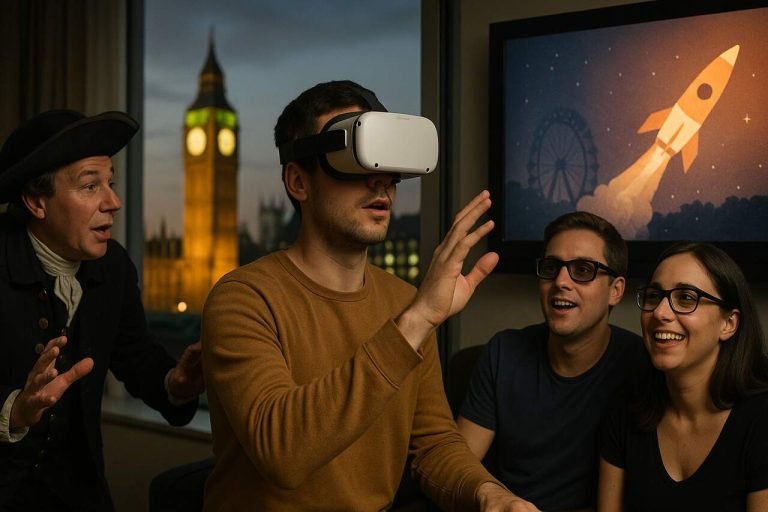London’s nights have been changing. It used to be about going somewhere to watch or listen — a show, a gig, maybe a play. You sat down, lights went down, you stayed in your seat until it was over. Now it’s different. Now people want to be inside it. Part of it.
Immersive entertainment’s become its own scene. You’re not just watching, you’re moving through it. Rooms change, sets shift, sometimes you don’t even know where the “stage” starts. One minute you’re in a bar, the next you’re being pulled into a storyline you didn’t see coming.
Why It’s Caught On
Part of it is simply that London’s packed. With so much happening all the time, a normal night out can easily blur into the rest. So these places go bigger. Stranger. You can’t just scroll past them online — you have to see it yourself.
And people want something to talk about the next day. Dinner’s nice. Drinks are fine. But walking through a hidden doorway into a full Victorian street that’s somehow inside a warehouse? That sticks.
Different Types
Some shows are more like theatre. Actors around you, guiding you through a plot, maybe even giving you a role. Others lean into the mystery side — you’ve got puzzles, hidden rooms, things you only find if you look for them.
Then there are the ones that just aim to blow your senses out. Lights, sound, performers so close you feel the air move when they pass you. It’s not subtle, but that’s the point.
The Soho Factor
There’s one spot in Soho, Cirque Le Soir, that’s been pushing boundaries for years. People talk about the performances in whispers, partly because you can’t really explain it without killing the surprise. Think a theatre of varieties turned up to eleven — wild, surreal, sometimes even a bit too much. It’s the sort of place where you walk out wondering if it really happened or if you just dreamt it on the taxi ride home.
The Money Side
These nights aren’t cheap. Tickets can run high, and if food or drink’s part of it, that’s extra. But that’s part of the draw — you’re paying for something you can’t just get anywhere. A one-off experience.
Some places run for a few weeks and then shut down or change the whole thing. Which means if you miss it, it’s gone. That urgency sells.
The Spaces
London’s full of basements, warehouses, and odd corners you’d never notice. Immersive spots use them well. One night you’re in a converted church, another you’re in a disused tube station. Even when the set is only temporary, the way the space is designed makes it feel larger than life.
It’s in the small details too — props you can handle, lighting that changes as you pass through, and background music that shifts with each room. You don’t just see the show. You live in it for a while.
Why People Keep Coming Back
It’s unpredictable. You could go twice and have a different night each time, depending on who’s in the crowd, where you stand, or which door you take first.
And it’s personal. Someone looks you in the eye, speaks to you like you’re part of the scene, hands you something — a note, a drink, a clue. That’s not the same as sitting in row G, seat 14.
The Social Side
These experiences are made for sharing. Not just photos (though you’ll see plenty of those) but stories. You meet people you wouldn’t otherwise. End up talking to strangers because they’re as lost in the scene as you are.
That’s part of why it’s blowing up — it’s connection, not just consumption.
What’s Next
It’s only going to get bigger. More tech, bigger sets, weirder ideas. Maybe VR woven into real spaces. Maybe city-wide games where you have to go to different locations to unlock the next part. London’s got the size and the history to make it work. And if it keeps moving like this, nights out in the city won’t just be about where you went — they’ll be about the world you stepped into for a few hours, and the fact that for a little while, it felt real.

